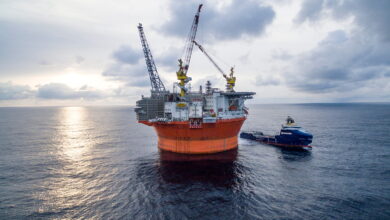FMC Technologies, Technip begin operations as combined company TechnipFMC
TechnipFMC announced that it is operating as a unified, combined company following completion of the merger of FMC Technologies and Technip. The merger creates a global leader in oil and gas projects, technologies, systems, and services that will enhance the performance of the world’s energy industry.
Driving the change the oil and gas industry needs
Beyond today’s pressures on the oil and gas industry, hard-to-reach resources cannot be fully developed unless there is significant and sustainable improvement in project economics. Change is needed, now more than ever.
TechnipFMC is well-placed to meet the challenge and lead this change. By bringing together complementary skills and innovative technologies, the company can boost efficiency, lower costs, and accelerate schedules. Its offerings encompass concept to project delivery and beyond. Whether clients need an individual operation or an end-to-end solution, TechnipFMC is positioned to transform project economics across subsea, onshore/offshore and surface, and lay the foundation for sustainable success.
“This is a transformational day for TechnipFMC and our employees,” Thierry Pilenko, Executive Chairman of TechnipFMC, said. “As one company, we can make oil and gas projects more viable, driving value for our clients and shareholders. With an unmatched commitment to innovation and efficiency, TechnipFMC will advance the creation of cost-efficient solutions for years to come.”
Combining capabilities and technologies to unlock potential
Formed through the combination of two market leaders with complementary capabilities and technologies, the company builds on early involvement and integrated solutions to simplify field architectures and decision-making. TechnipFMC believes in innovation, smarter design, and seamless ways of working.
Doug Pferdehirt, Chief Executive Officer of TechnipFMC, said, “With our merger complete, TechnipFMC is uniquely positioned to unlock possibilities for our clients to transform their project economics. We will do this by inspiring a culture of challenging conventions and finding new and better ways of doing things. I am honored to lead our combined team of talented employees and look forward to our future as TechnipFMC.”
Stock exchange trading
TechnipFMC will begin trading today on the New York Stock Exchange and on the Euronext Paris Stock Exchange under the symbol FTI. Under the terms of the merger agreement, FMC Technologies shareholders received one share of the combined company for each existing share of FMC Technologies, and Technip shareholders received two shares of the combined company for each existing share of Technip.
Brand and purpose
TechnipFMC today unveiled its new brand identity and logo, which represent the joining together and integration of two established entities to create one bold, forward-looking company. TechnipFMC is moving forward with a purpose to bring together the scope, know-how, and determination to transform its clients’ project economics and a vision to enhance the performance of the world’s energy industry. For more information, download the digital press kit at TechnipFMC.com.




